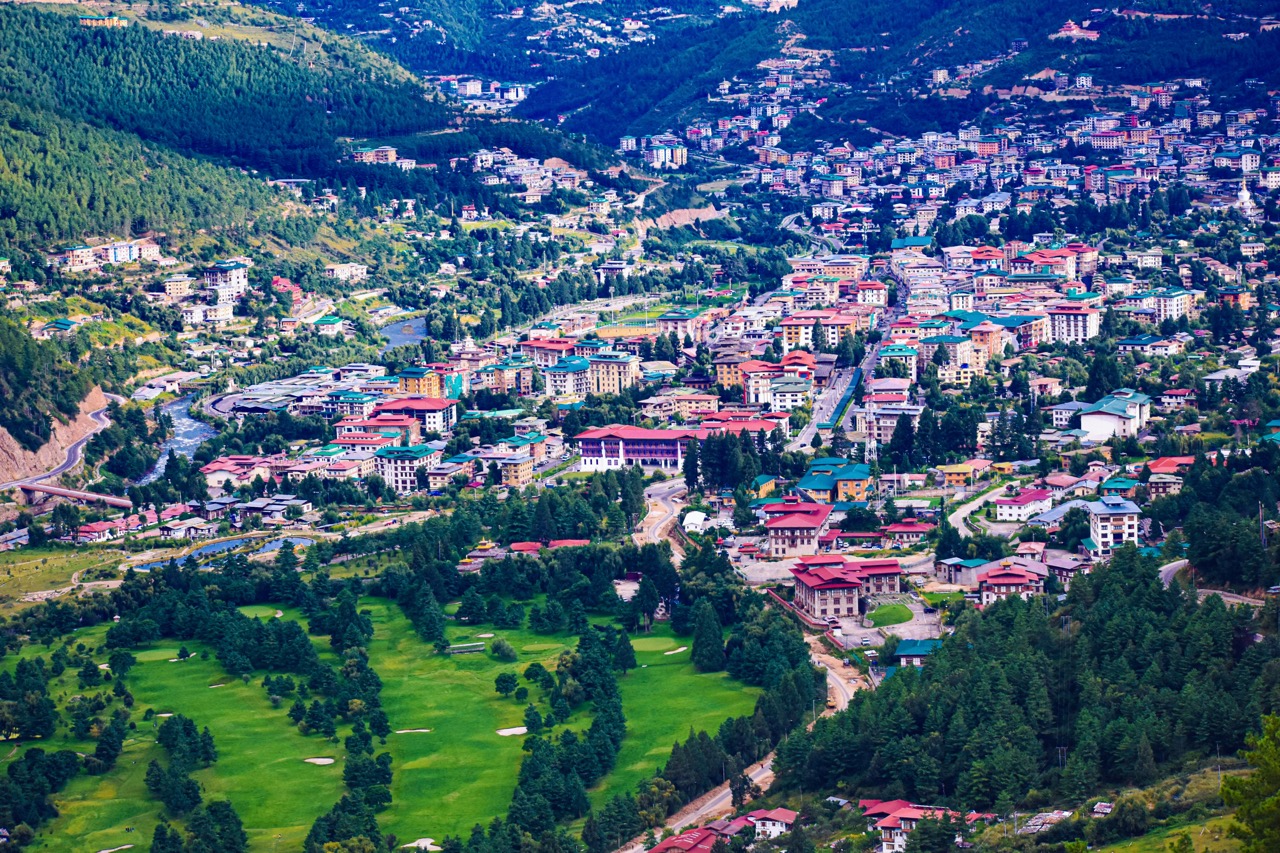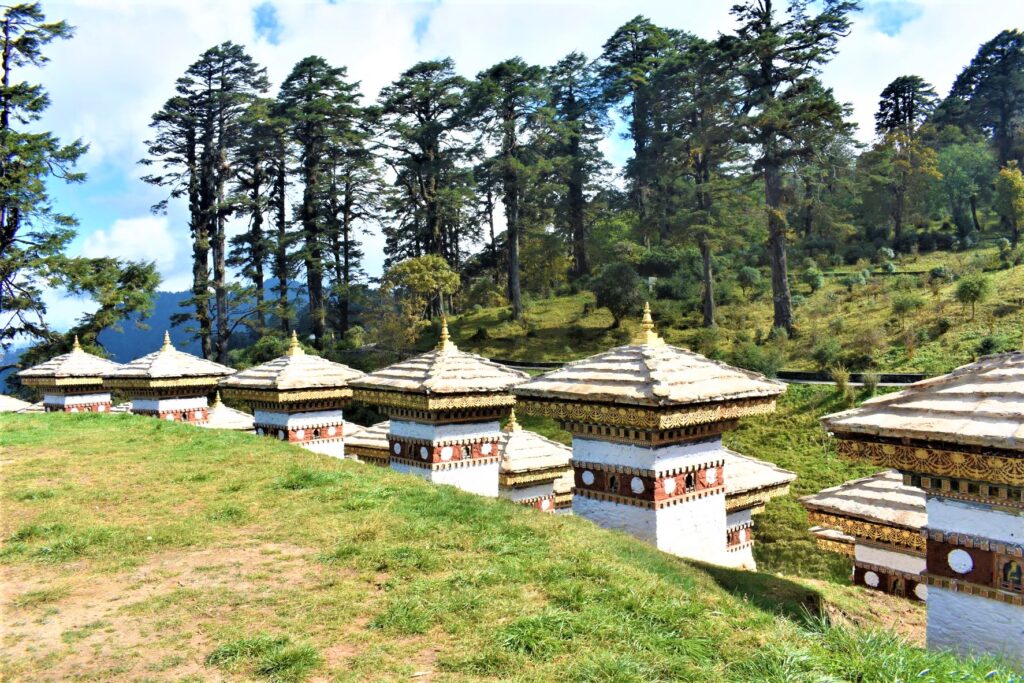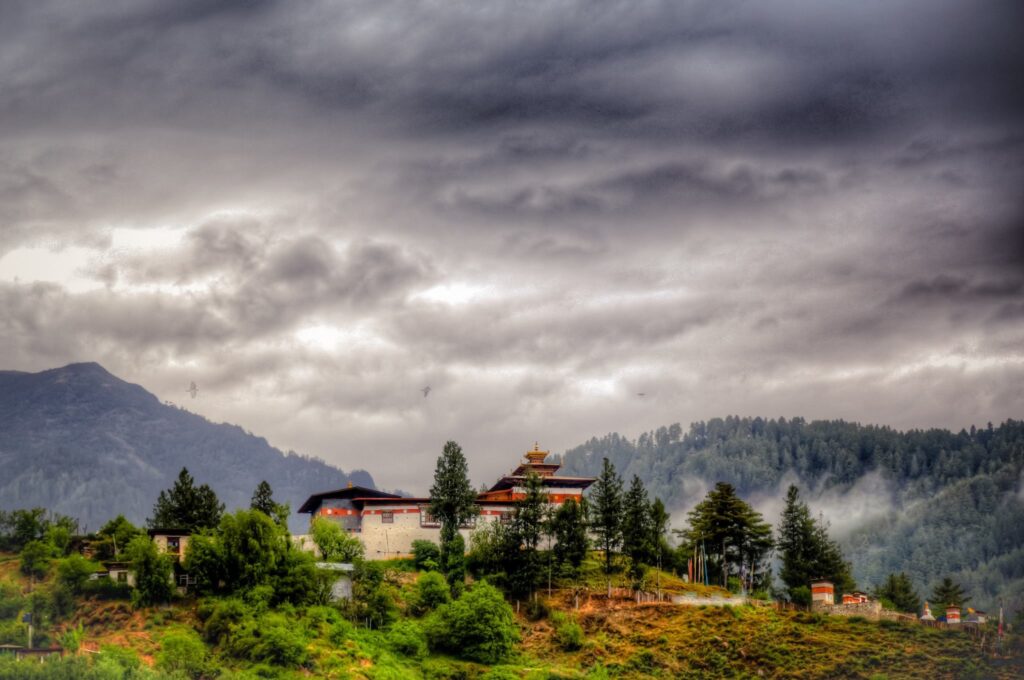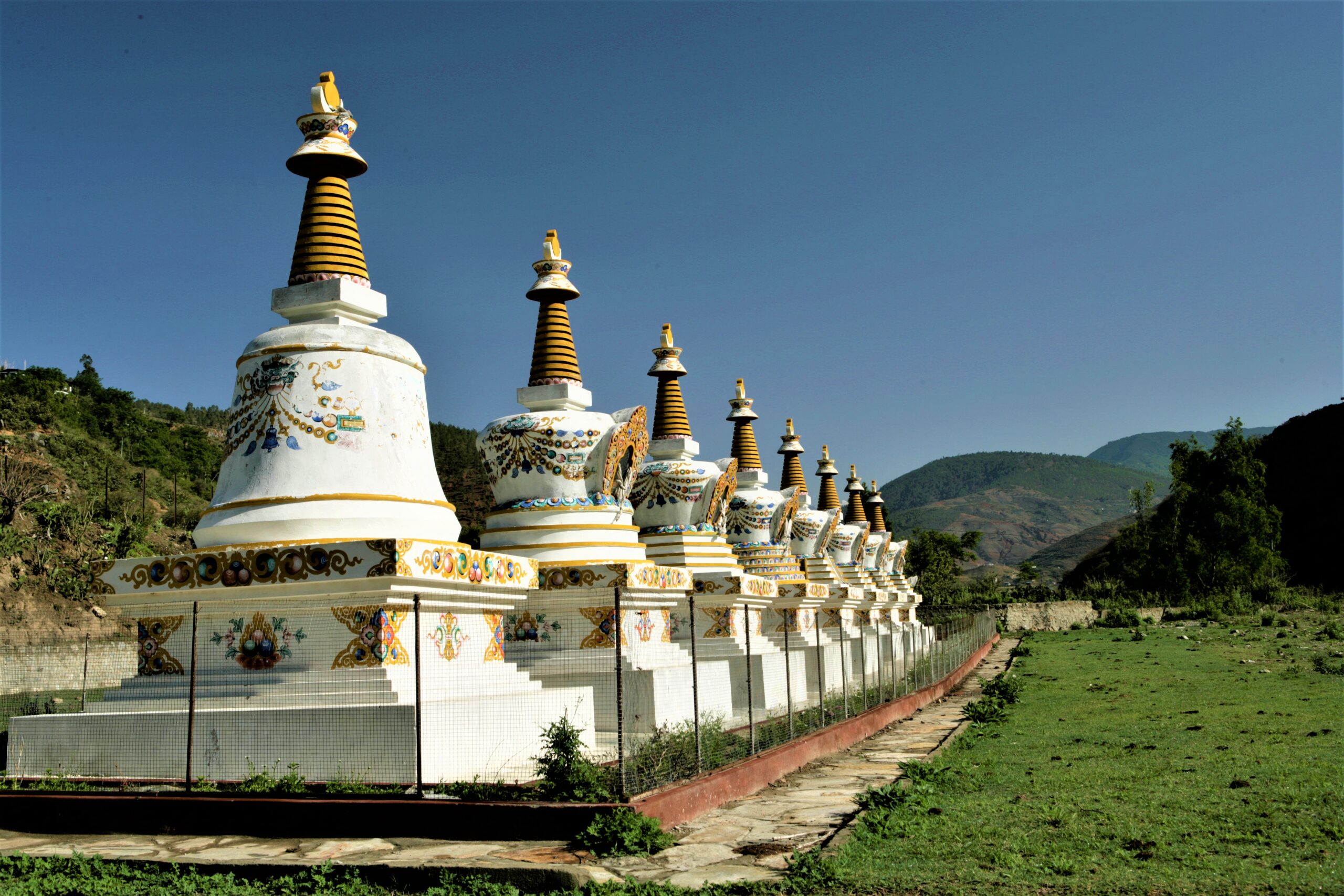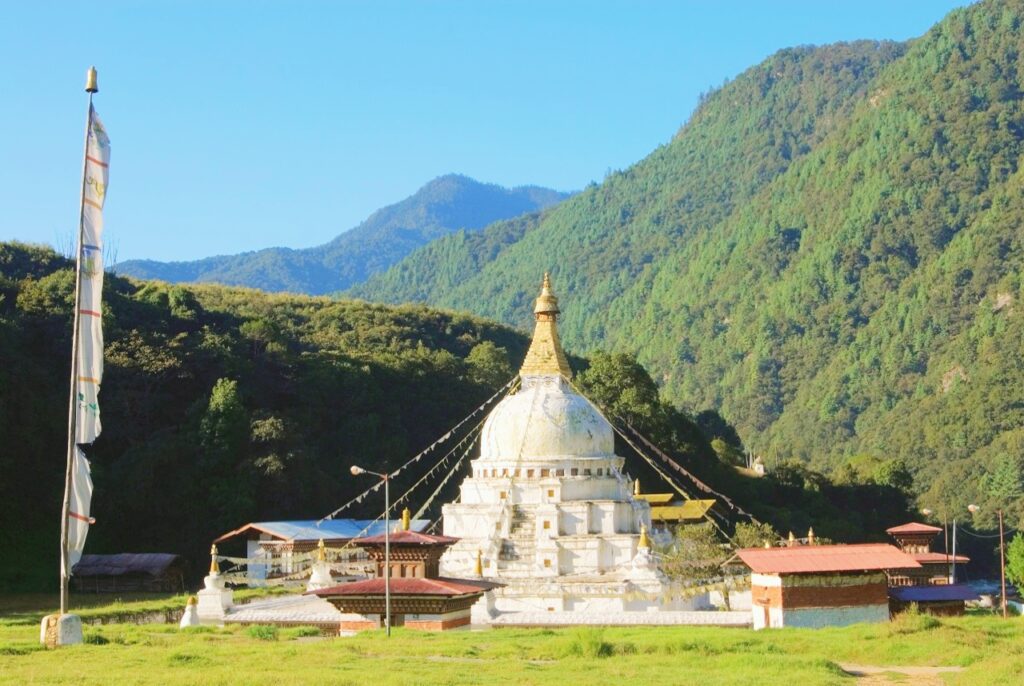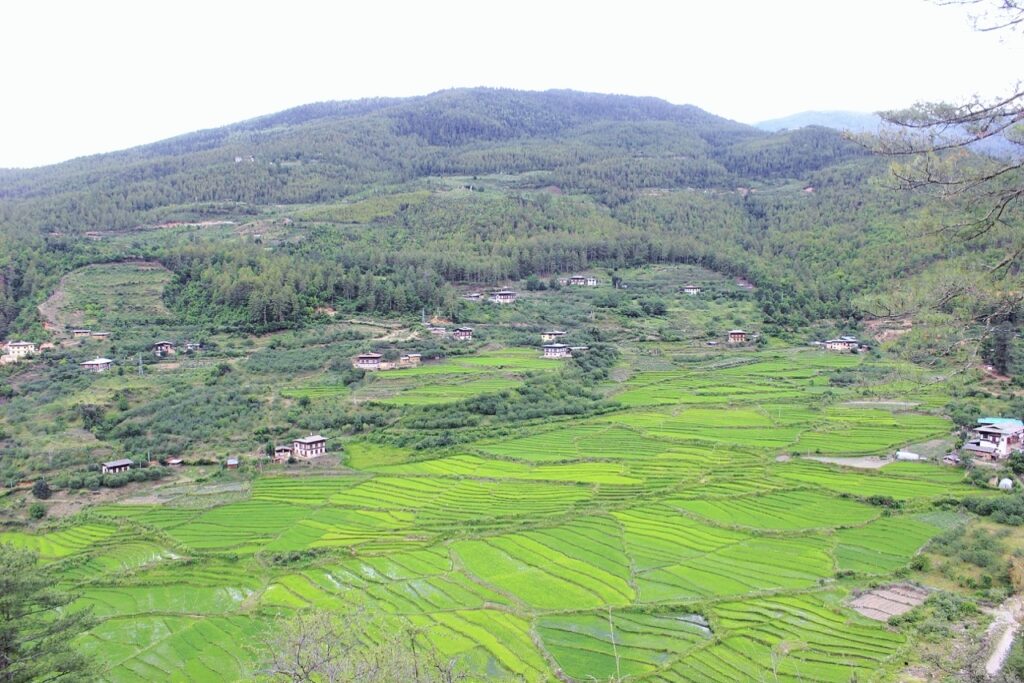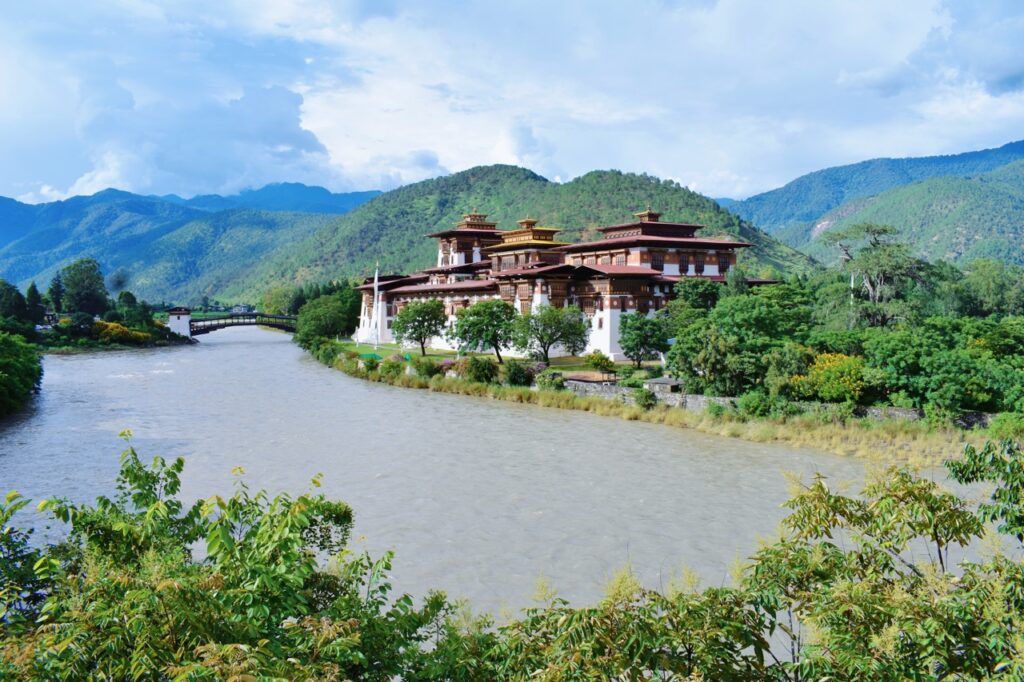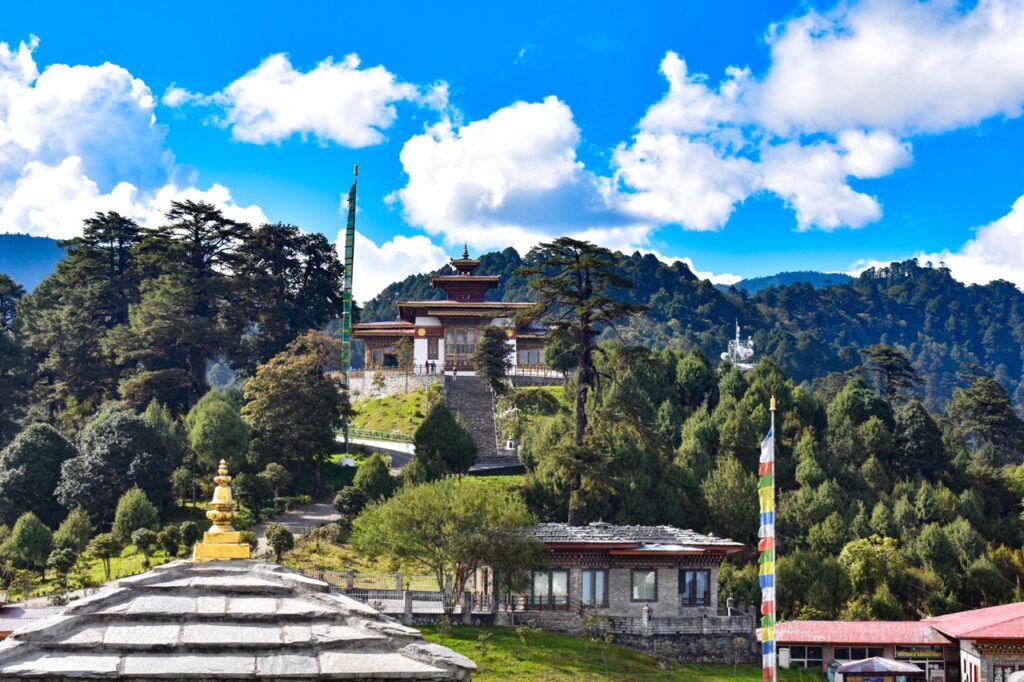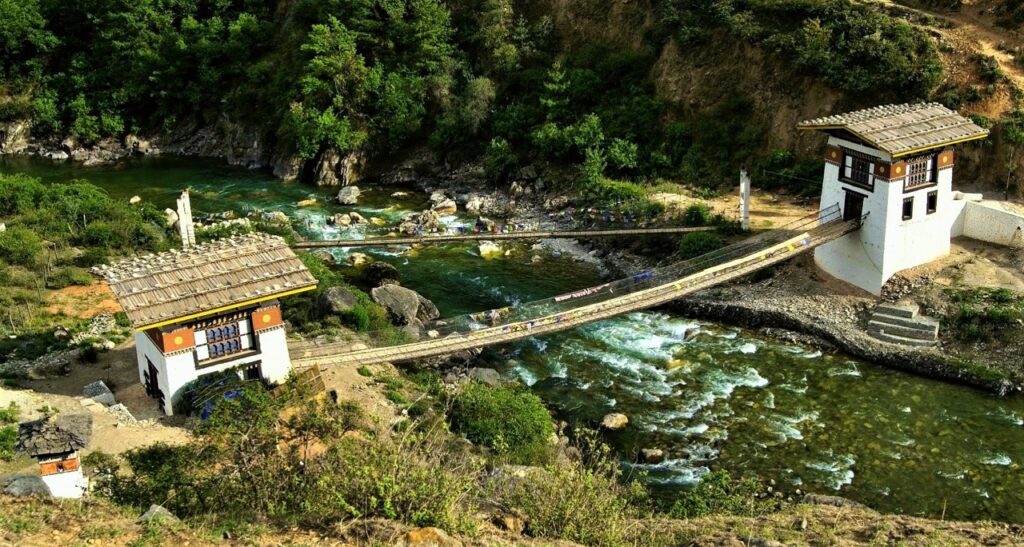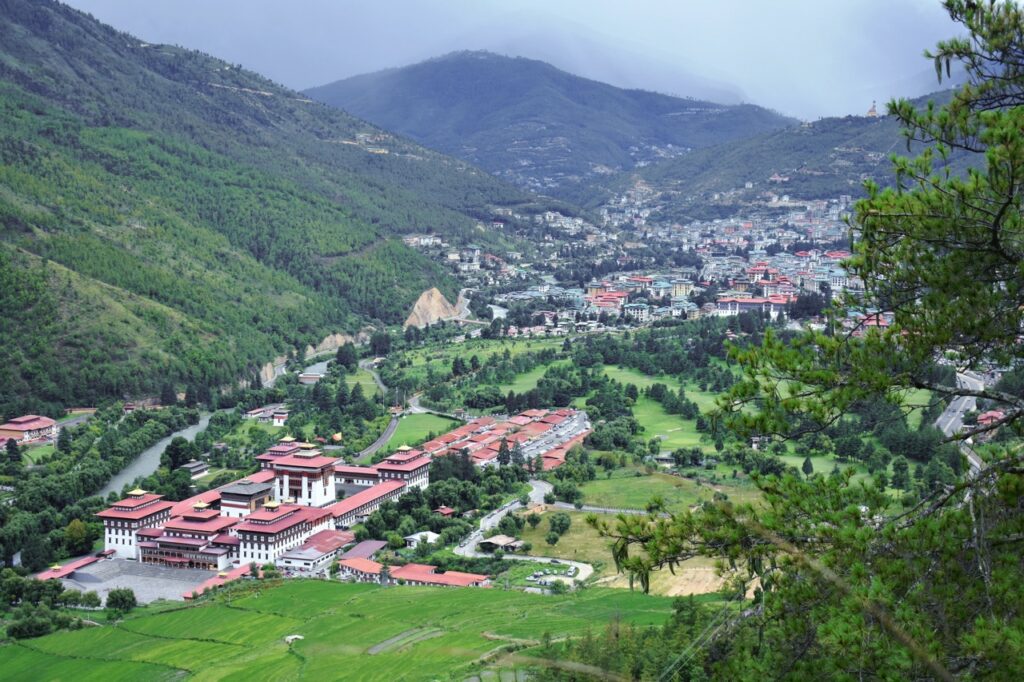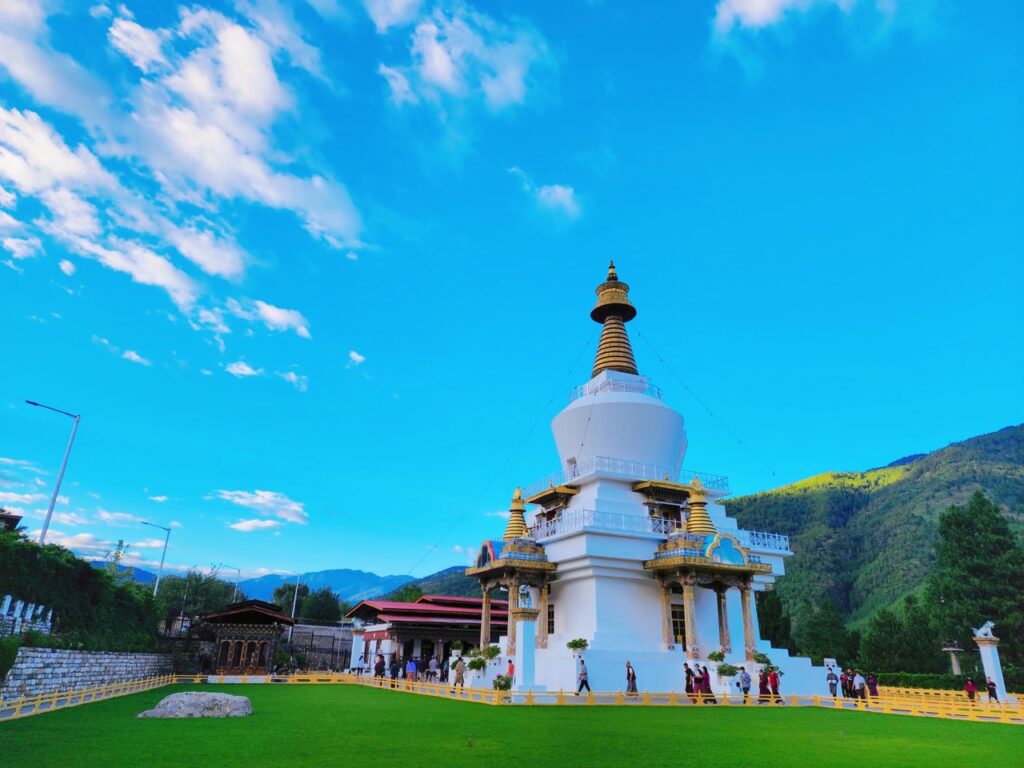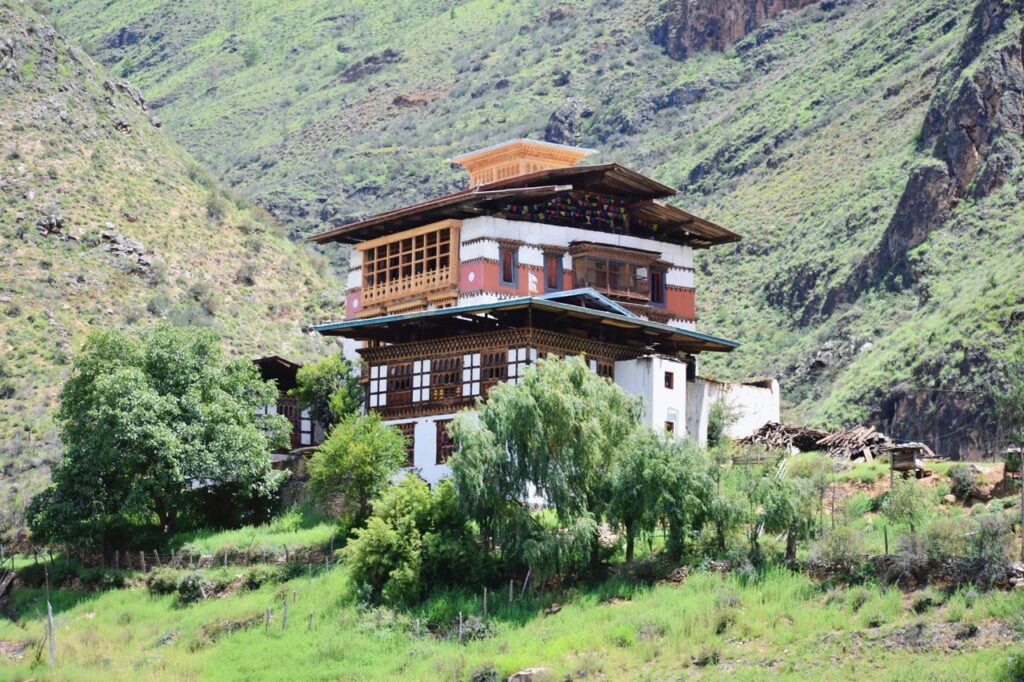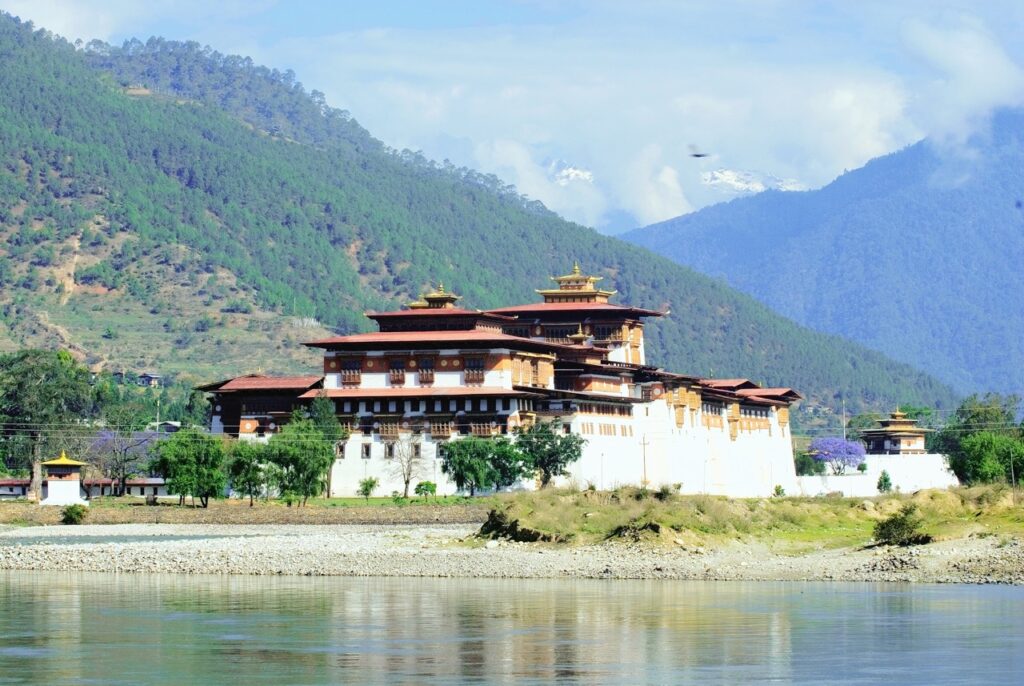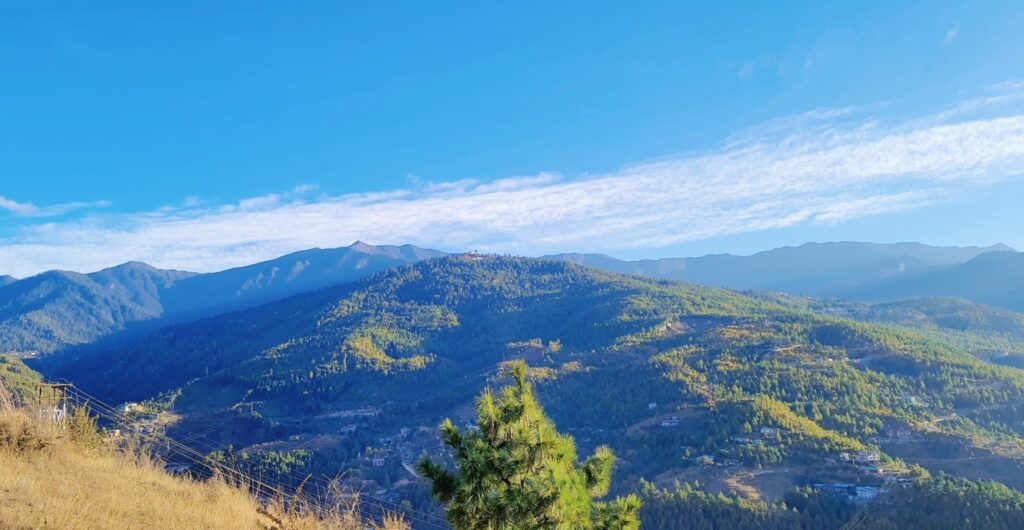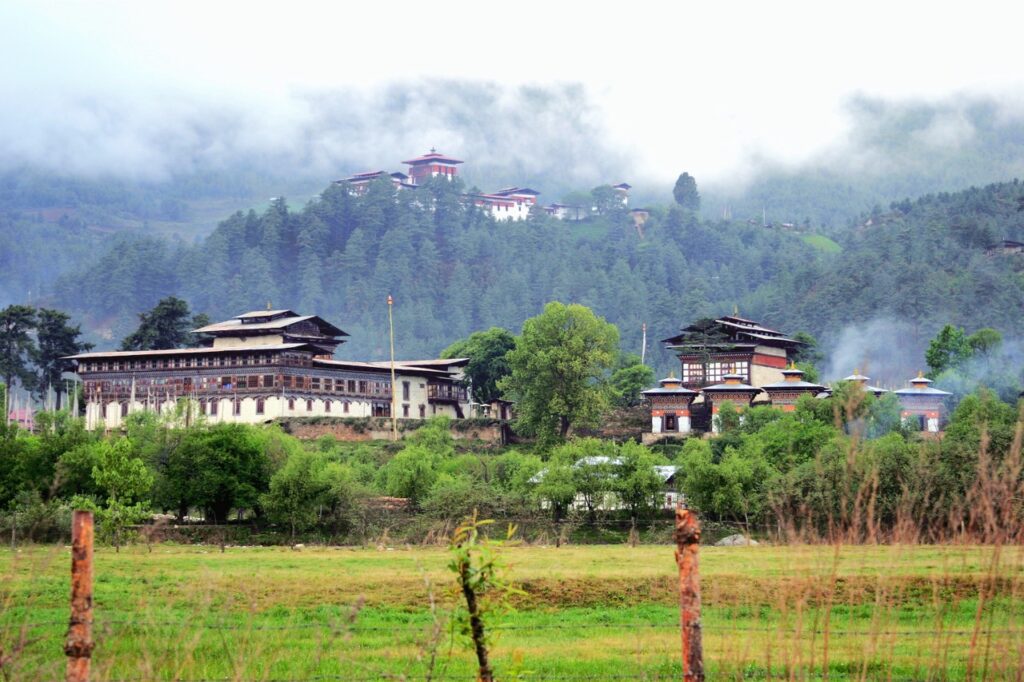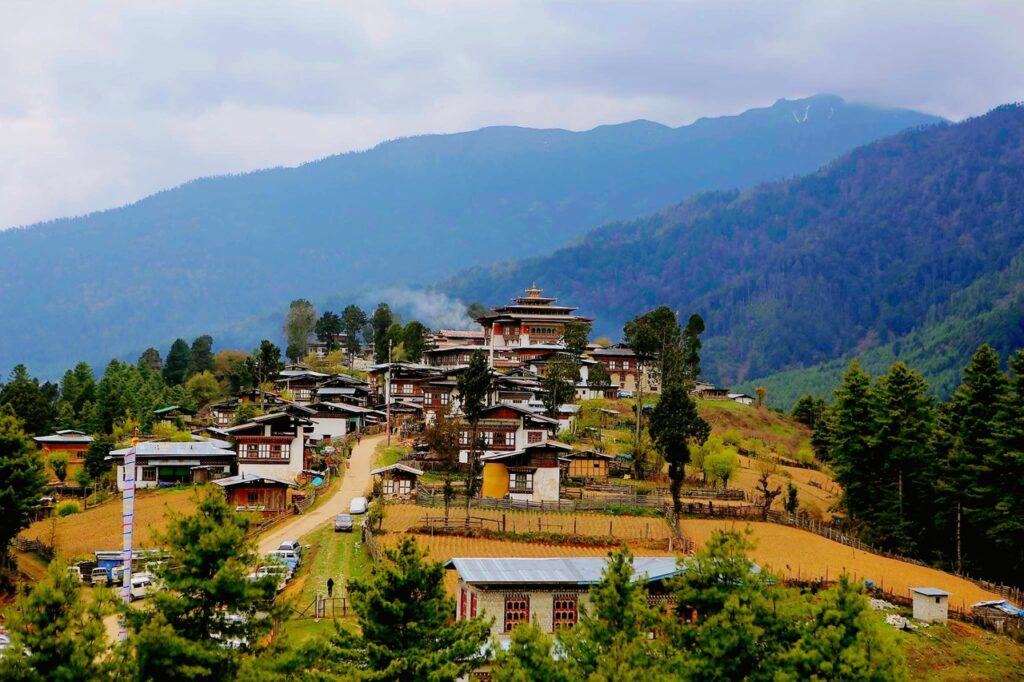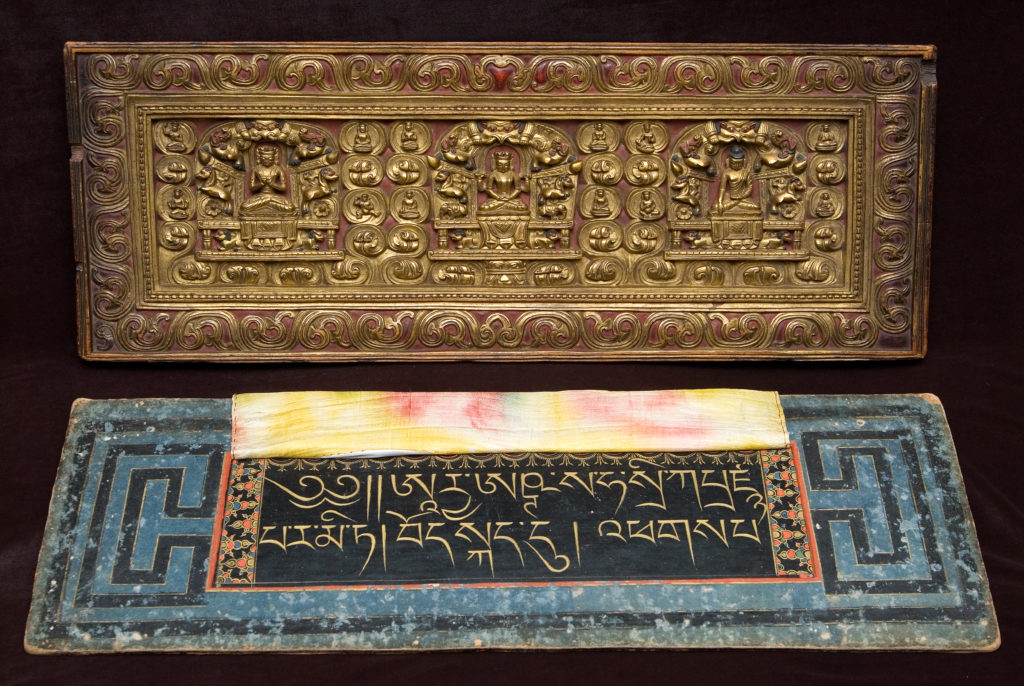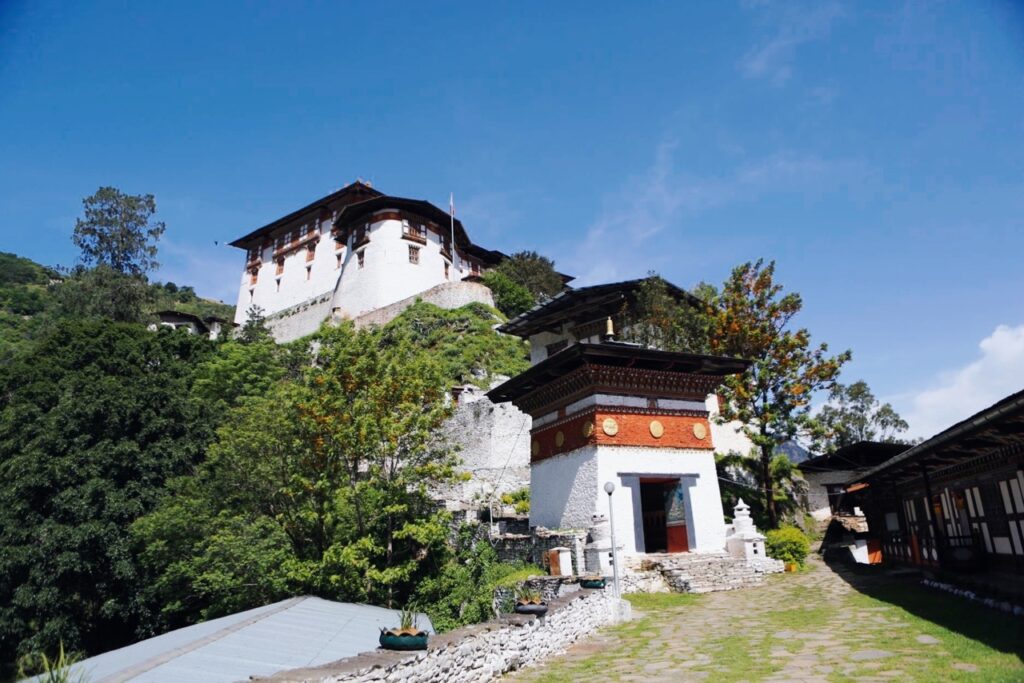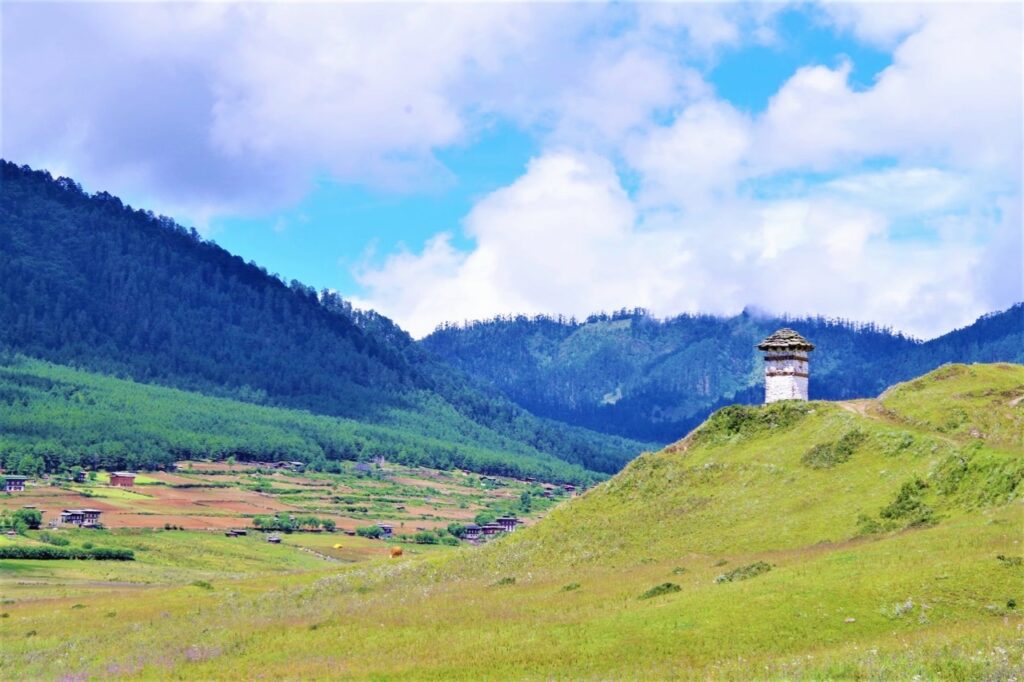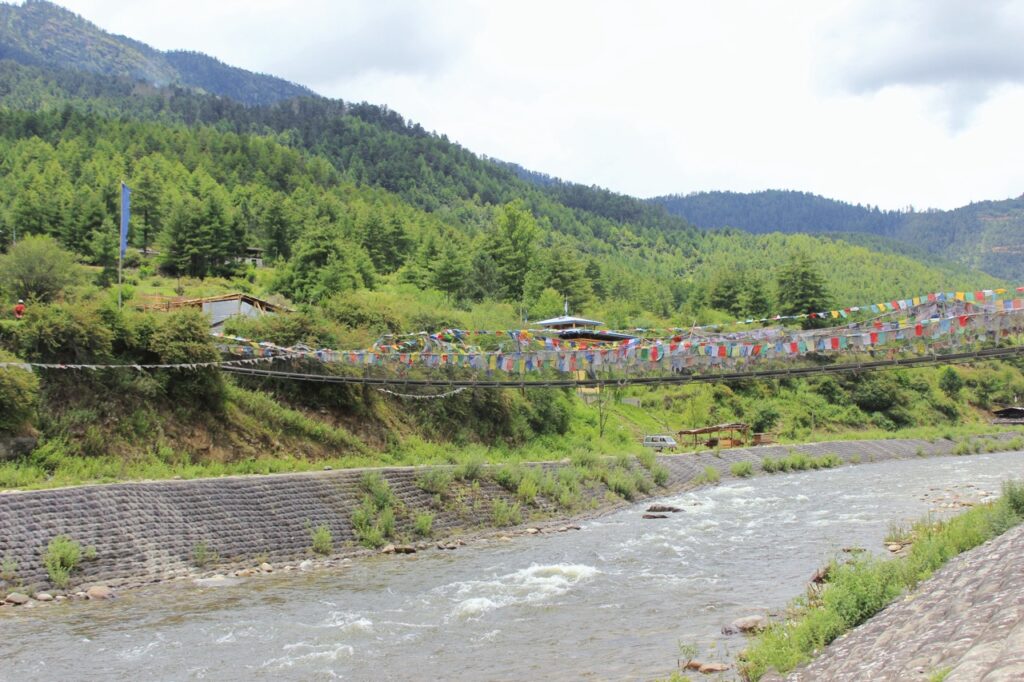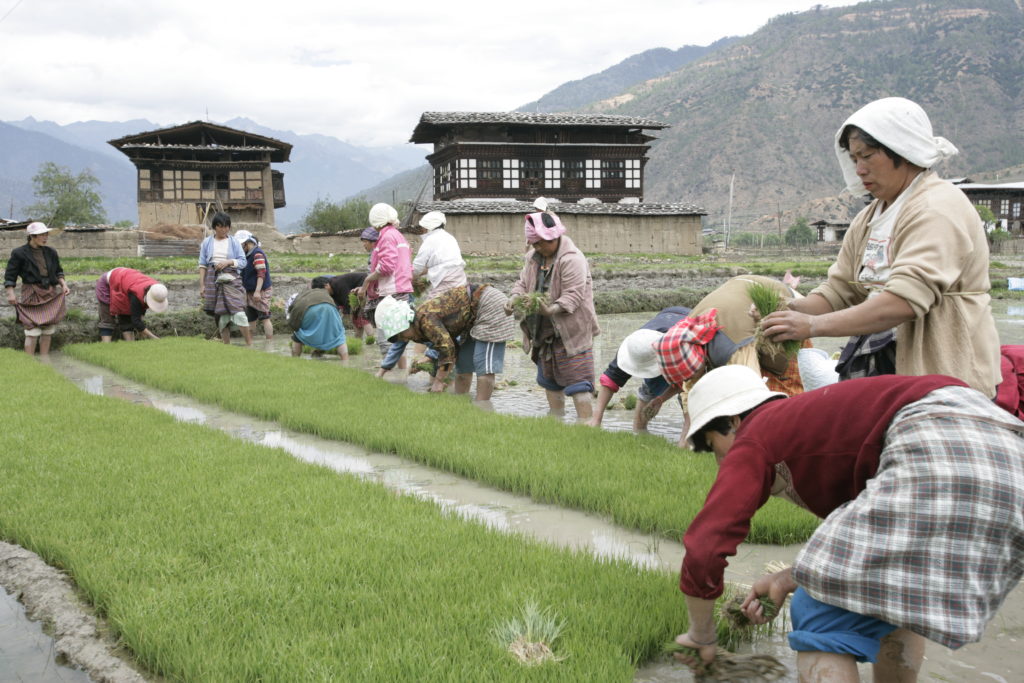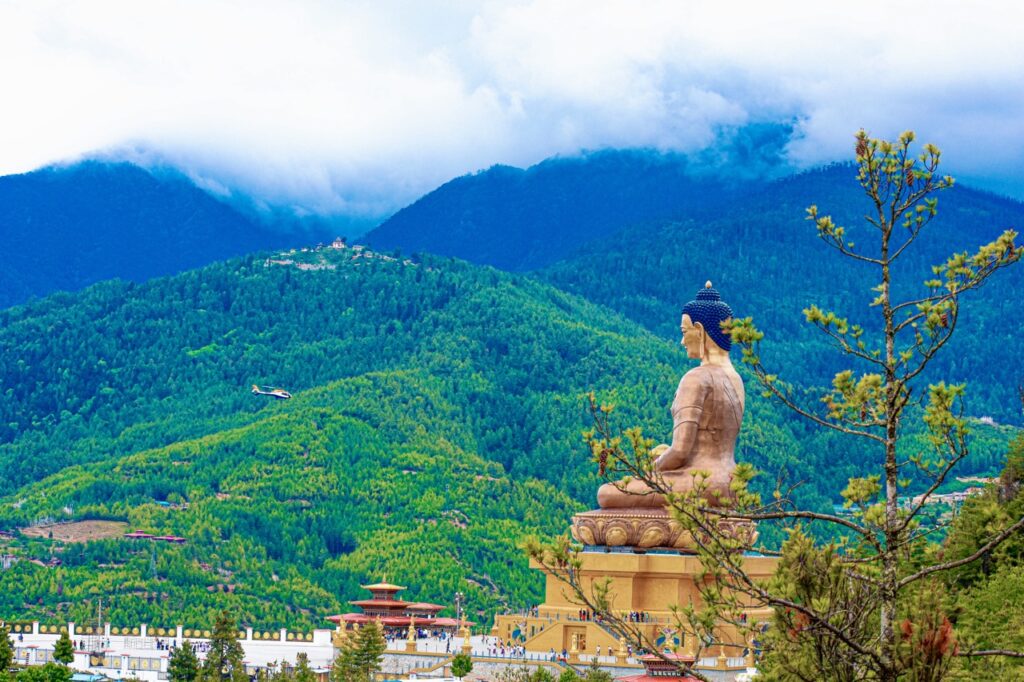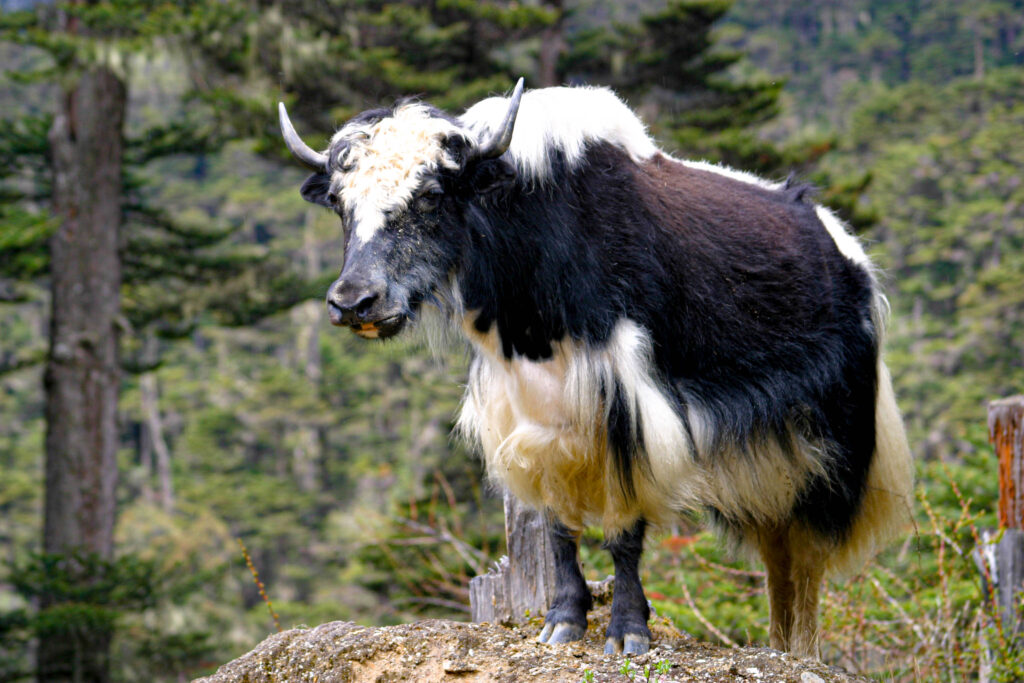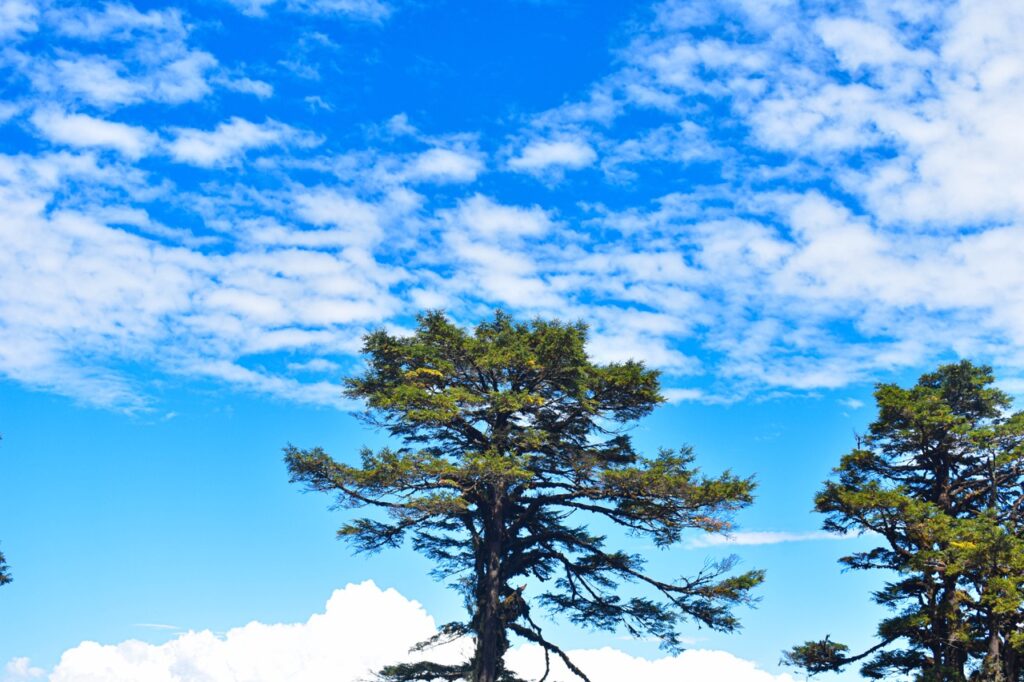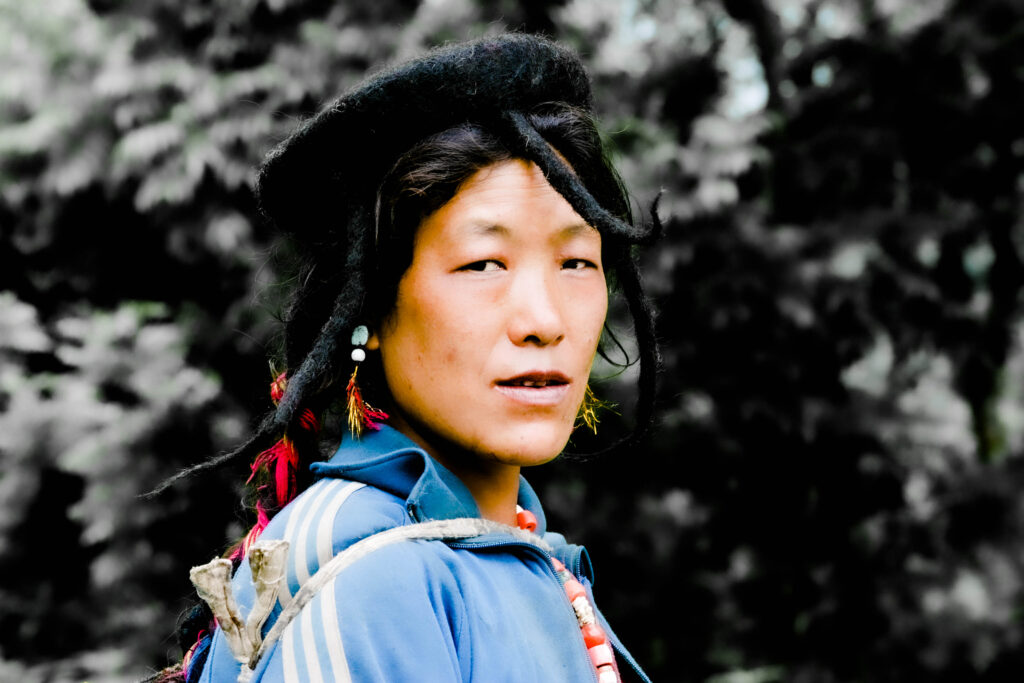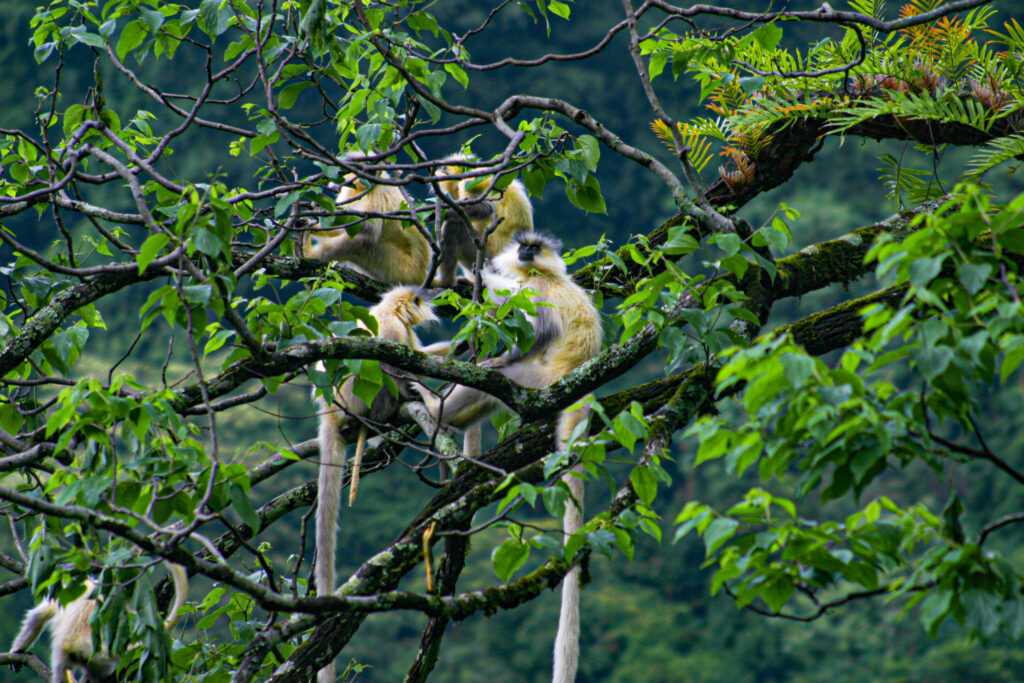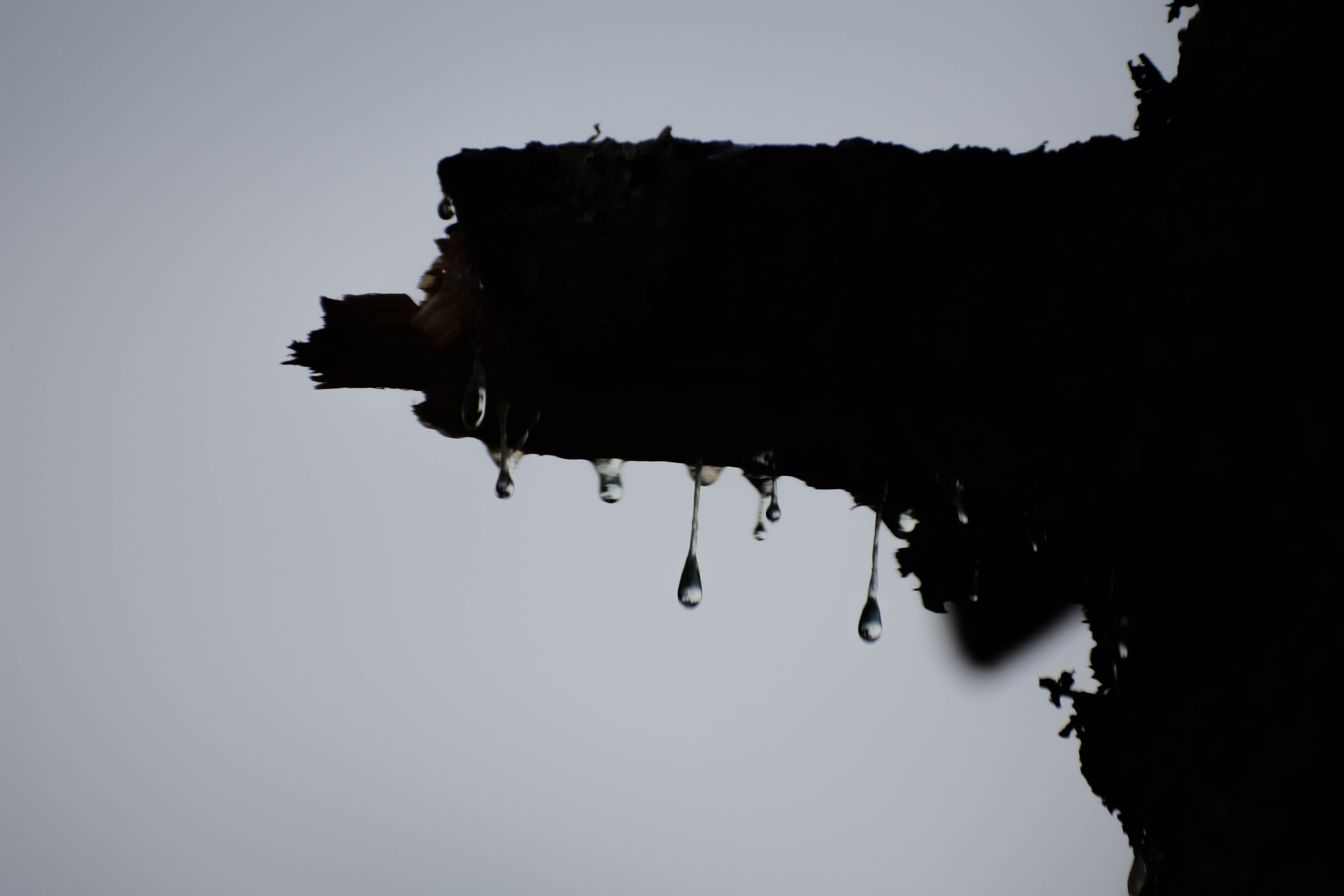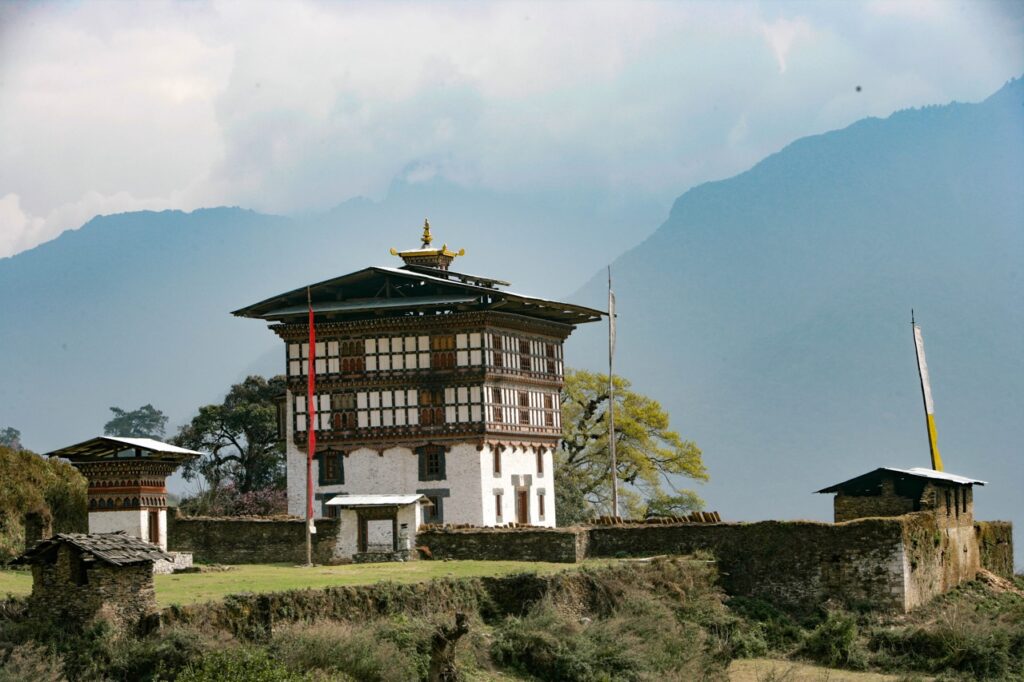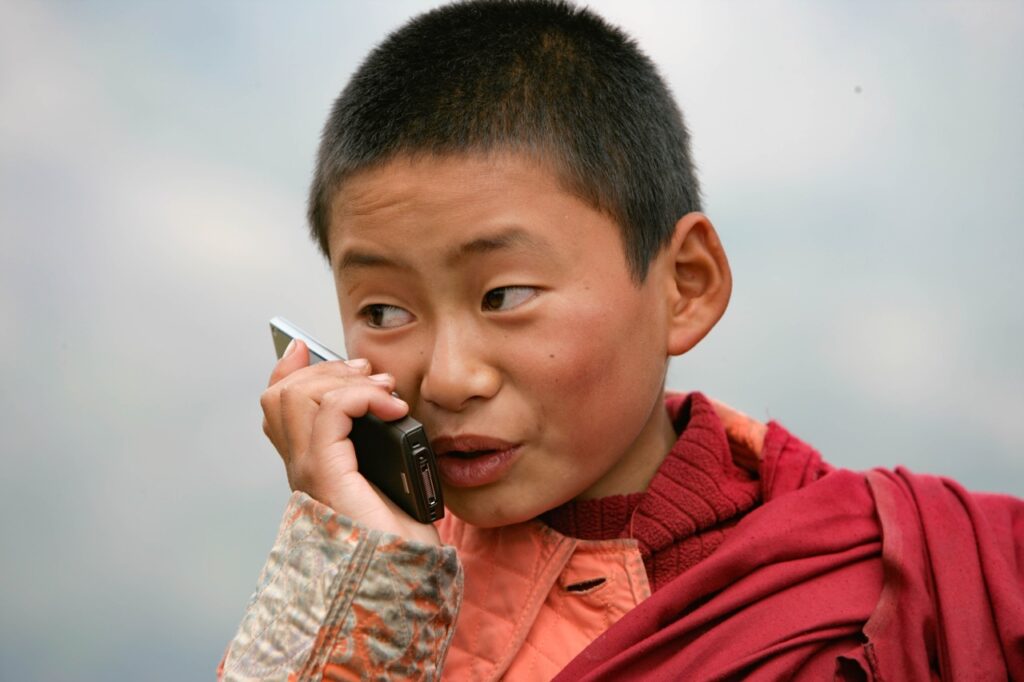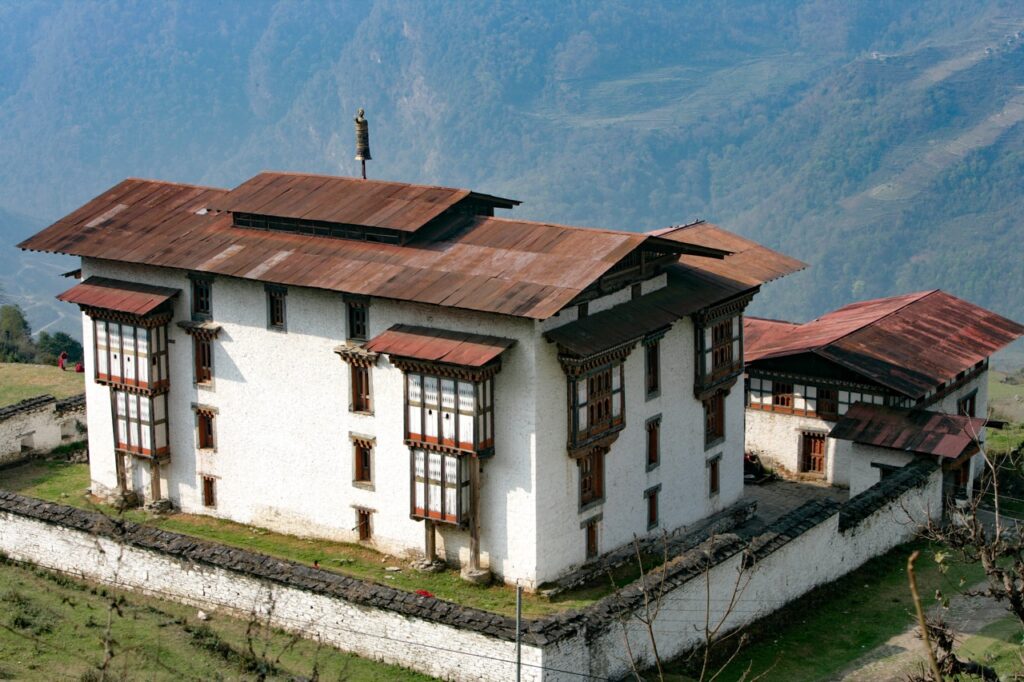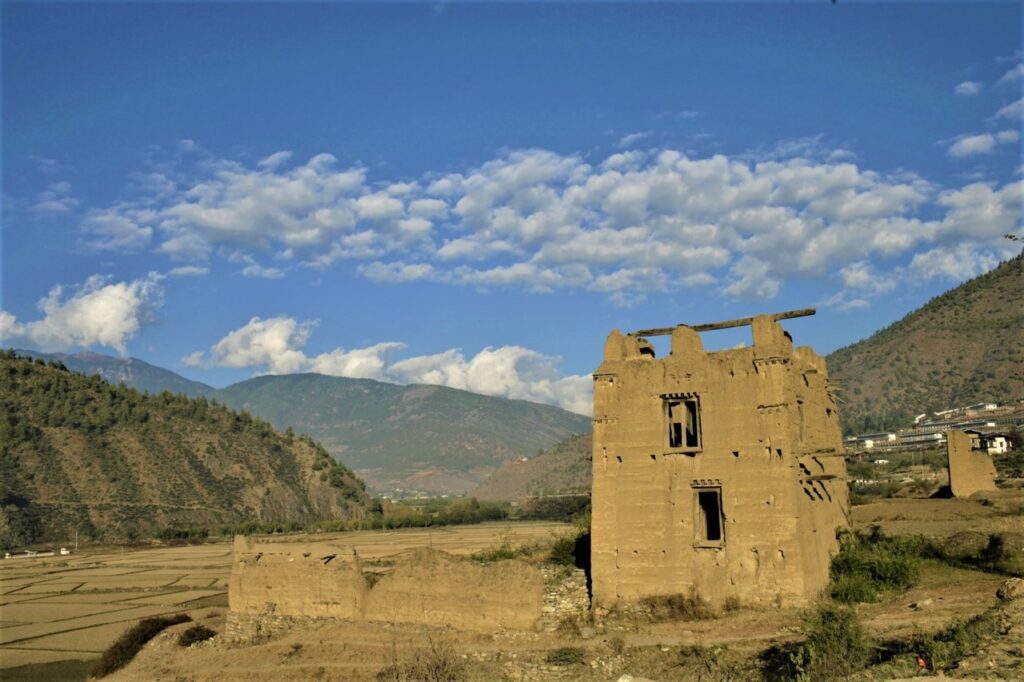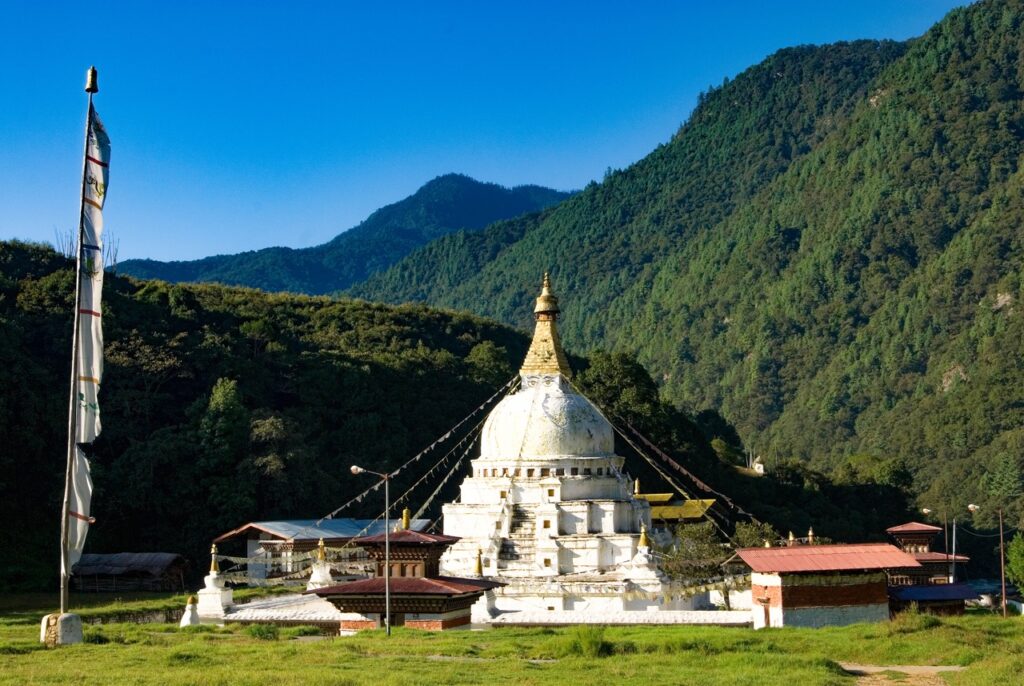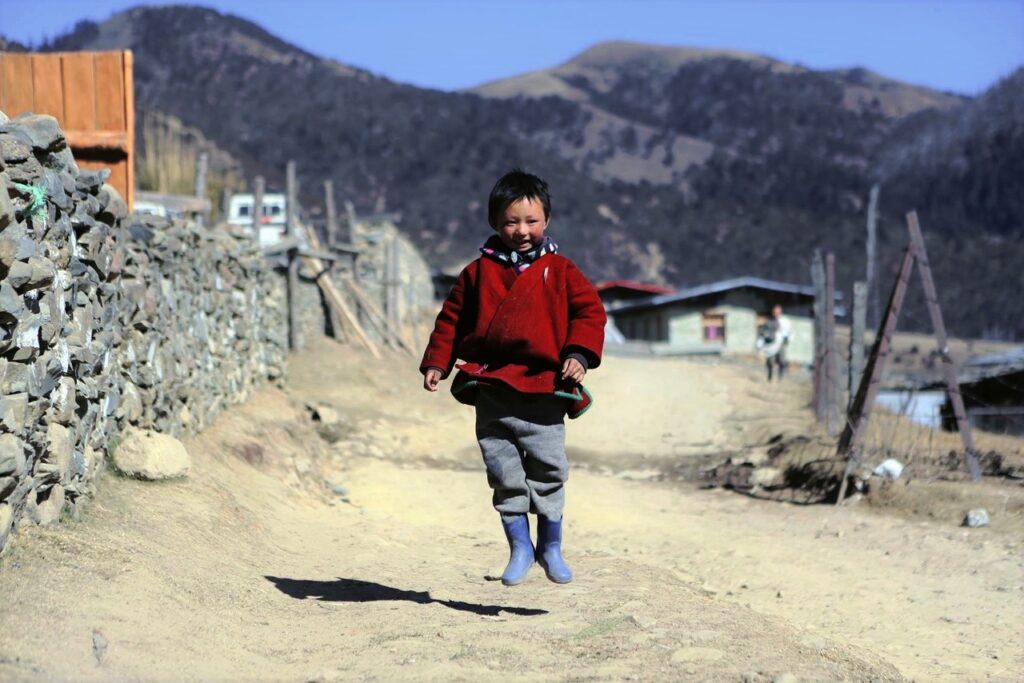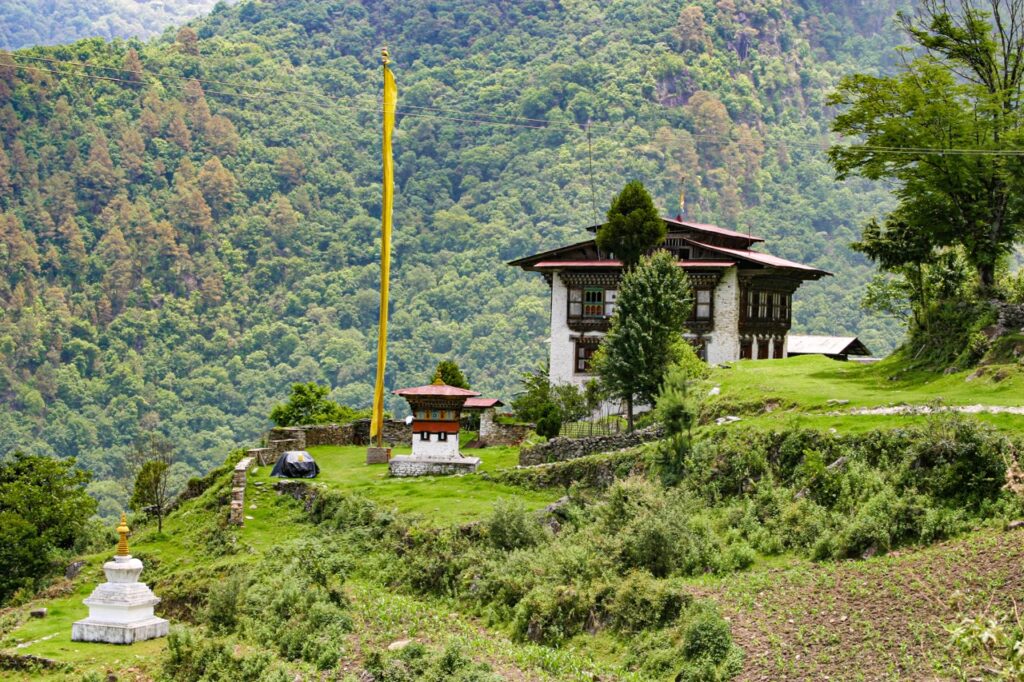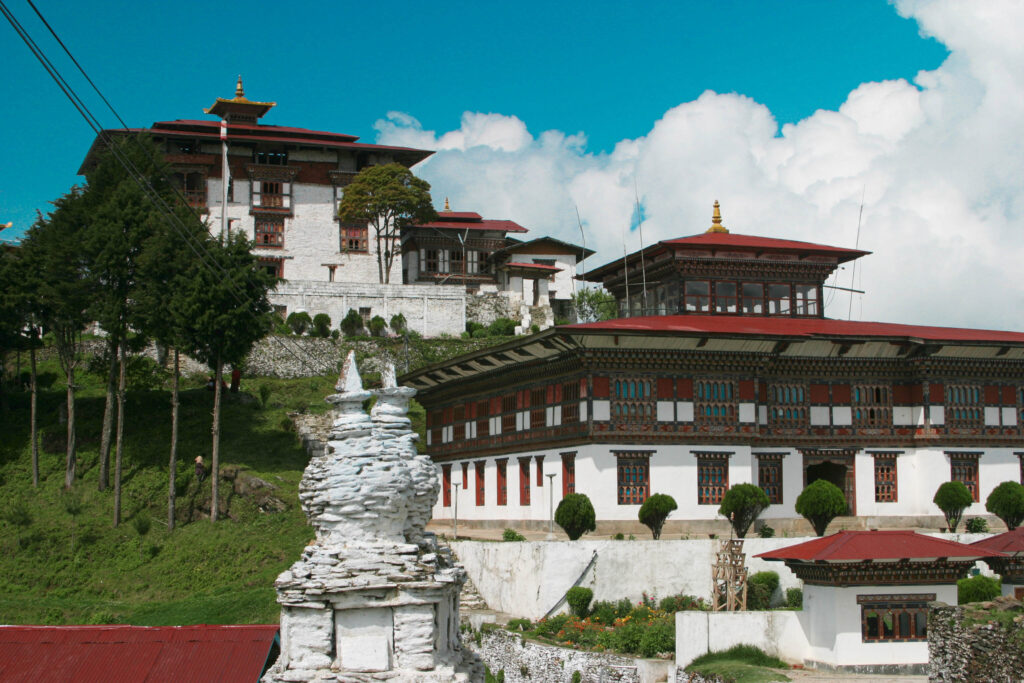8 Day Enchanting Bhutan Tour
Tour Highlights
Tour fact
Duration:8 days 7 nights
Grade: Moderate
Season:March,April,May
Sep,Oct,Nov.
Places:Paro,Thimphu,Gangtey,
Punakha,Bumthang.
Accommodation
Plan:3 star hotel
Options: 4 or 5 star hotel
DAY 1 Paro To Thimphu
Kuzuzangpo and warm Welcome to Bhutan! On arrival at Paro International Airport, your guide will greet you upon exiting the arrival hall. Today, we follow a gentle schedule as we acclimatize to the altitude. After lunch in Paro, we make the one-hour drive to Thimphu, Bhutan’s capital and home to around quarter of our population.
En route we take the opportunity to stretch our legs with an easy 10 minute walk to Tachog Lhakhang (temple) reached by crossing Paro Chhu (river) on one of the few remaining ancient iron chain bridges, both built circa 1420 by the Tibetan master Tangtong Gyelpo (aka the Bridge Builder).
We then visit the National Memorial Chorten (stupa) where we can join local worshippers who gather to circumambulate this famous stupa. This Thimphu landmark and sacred site was built in 1974 in honor of Bhutan’s visionary Third King, Jigme Dorje Wangchuck.
In the evening we have time to relax and settle into our hotel before getting together for an informal meet-and-greet over dinner.
DAY 2 Thimphu To Bumthang
Today will be the longest journey of our trip, as we travel from Thimphu to Bumthang. It's an 8-hour drive through beautiful forest landscapes and breathtaking mountain views. We'll take it slow and enjoy the ride, with multiple stops for tea breaks and photo sessions in stunning spots.
We'll leave early from Thimphu and head through the Dochula Pass (at an elevation of 3,100m), the site of 108 stupas built by Bhutan's Queen Mother in memory of Bhutanese and Indian soldiers who died in 2003. We'll make brief stops here to view the spectacular snow-capped Himalayan mountain range over the forest below. Then we'll descend to Punakha via Wangdi valley, taking in the stunning landscapes and nature along the way.
During our journey, we'll host the Wind-Horse Prayer Flags and chant prayers to overcome life's obstacles and fulfill our aspirations. We'll continue en route, stopping for a tea break near a beautiful stupa surrounded by fresh air, trees, and streams. We'll take a short break to relax and stretch our legs by walking around the stupa.
We'll then descend further and stop for lunch at a restaurant along the way, before passing through the beautiful and stunning Trongsa Dzong (fortress), the largest in the country. By evening, we'll reach Bumthang in Central Bhutan, which is the spiritual heartland of Bhutan.
This region is home to many religious relics and histories, and it's where some of our oldest Buddhist temples and monasteries, such as Jambay Lhakhang, can be found. Many Guru Rinpoche sacred sites remain undisturbed in pristine nature, and it's here that Buddhism was first introduced in the 8th century by the Indian Tantric master, Padmasambhava (Guru Rinpoche). Later, many important Tibetan masters and Tertons (treasure-discoverers) lived and practiced in this sacred region.
Visitors are also attracted to Bumthang's scenic beauty and biodiversity, with its broad gentle valleys and forests of native pines. It is an ideal place to practice meditation, surrounded by the blessings of ancient masters and to relax in its peaceful natural environment.
DAY 3 Bumthang Sacred Sites
In the morning, we visit Jampal Lhakhang, also known as the Temple of Maitreya, which is one of the oldest monasteries in Bhutan. It was constructed in the 7th century by the Tibetan King Songtsen Gampo to conquer a giant demoness and overcome evil forces that were hindering the introduction of Buddhism into Bhutan. Here, we can see an ancient and majestic statue of Maitreya, surrounded on either side by four bodhisattvas and old paintings of the Buddhas that adorn the walls of the circumambulation path. According to legend, when Guru Rinpoche arrived in Bhutan, he preached the Kagye cycle (Heruka) teaching to the king of Bumthang, Sendhu Raja and his court from the roof of this temple. The main Jowo (Maitreya) statue is considered to be as precious as the Lhasa Jowo in Tibet, granting wishes and is highly revered by the locals.
From here, we to proceed Kurje (body print), which is regarded as one of the most sacred sites in Bhutan. It is here that Guru Rinpoche meditated for three months inside a cave to subdue a powerful local deity and left his imprint as the symbol of the first introduction of Buddhism in Bhutan. Later, a monastery was built to preserve this important holy site, and behind it, there is a tall cypress tree believed to have sprouted from the walking stick of Guru Rinpoche. Within Kurje Monastery, we can view majestic statues, paintings, and ancient sacred ornaments. After visiting the monastery, we can walk to the nearby Kurje Holy Spring of Guru Rinpoche, where the healing waters are believed to purify negative energy and bring physical well-being. Then, we take a short walk across a suspension bridge to Tamzing Monastery built by Terton Pema Lingpa, a great treasure revealer.
In the afternoon, we visit the sacred site at Tharpaling Monastery, located at an altitude of 3600m, overlooking Chumey Valley in Bumthang. The monastery was founded by Longchenpa (1308-1363), the great philosopher and practitioner of Dzogchen.
Here, great masters including Jigme Lingpa, Nyoshul Khen Rinpoche, and Dilgo Khyentse Rinpoche meditated. Nearby are Chodrak Monastery, where Guru Rinpoche meditated, and Dzambala Lhakhang. Longchenpa’s Seat, a rock throne where Longchenpa wrote part of the Seven Treasure texts (the highest Dzogchen text), is located above Tharpaling.
We then walk up to Chodrak monastery, we take a brief introduction of Guru yoga based on Longchenpa Teachings and sadhana practice, followed by a period of silent meditation practice.
DAY 4 Bumthang To Gangtey
We depart Bumthang for Gangtey, stopping to visit Trongsa Dzong (built in 1543) on the way. Historically, Trongsa Dzong was the seat of power over Central and Eastern Bhutan, and both the first and second kings ruled from this ancient seat. Within the walls of the Dzong are 25 temples dedicated to Tantric deities, a watchtower (Ta Dzong) dating back to 1962, a printing shop producing religious texts in the ancient tradition, and a museum honoring the Wangchuck Dynasty. Today, the Dzong is home to around 200 monks during the winter months.
Our destination of Gangtey is famous as the winter home of the endangered Black-necked crane (Grus Nigricollis). Located in Phobjikha Valley, one of Bhutan’s most beautiful wilderness areas, the region around Gangtey has many nature trails to enjoy. We can witness village lifestyle and have the opportunity to interact with locals.
In Gangtey Village, we visit Gangtey Sangngak Choling Monastery, founded by Gyalse Rinzin Pema Thinley (the first Gangtey Tulku) in 1613. It is one of the most important sites of the Nyingmapa School and the main seat of the Pema Lingpa (1450-1642) tradition. The monastery has been completely restored, providing accommodation for the monks and retreat centers. Here, we take time to sit in meditation and make offerings of prayers. After visiting the monastery, we enjoy a gentle walk along the beautiful Gangtey Nature Trail, overlooking Phobjikha Valley.“
DAY 5 Gangtey To Thimphu
In the morning, we begin our return trip to Punakha Valley, which sits at an elevation of 1200m. Here, we will visit the majestic and beautiful Punakha Dzong, which is located at the confluence of the rivers Pho Chhu and Mo Chhu. This stunning example of ancient Bhutanese architecture is the second oldest and second largest of Bhutan’s dzongs, and was completed in 1637. It served as the country’s capital from 1637 to 1907, and today, it is the winter residence of Bhutan’s Monastic Body, as well as home to some of our most sacred ancient relics.
After lunch, we will ascend to Dochula Pass, where we will visit the nearby Druk Wangyel Lhakhang. In the evening, we will have time to explore Thimphu City and do some shopping.
DAY 6 Thimphu To Paro
In the morning, we will visit Buddha Dordenma (Buddha Point) in Kuenselphodrang Nature Park, which overlooks Thimphu City. This is the site of one of the largest statues of Buddha Shakyamuni in the world, completed in 2015, built to spread peace and happiness. Next, we will visit the Folk Heritage Museum located in Kawajangsa, in the heart of the capital city of Thimphu. The Folk Heritage Museum dedicates itself to connecting people with the rich Bhutanese folk heritage and rural history through exhibits, demonstrations, educational programs, and documentation of Bhutanese rural life. The museum strives to disseminate the rich cultural heritage across generations by preserving it in different forms.
We will also have an opportunity to visit the National Library of Bhutan and the National Institute for Zorig Choesum (the 13 Traditional Arts). Then, we will visit Bhutan's textile museum, where we can witness the traditional art of weaving and colorful Bhutanese dresses. Lastly, we will visit the farmer's market to explore the country's homegrown organic foods. After lunch, we will proceed to the Paro Valley, which is located at an elevation of 2,200 meters and is home to many ancient monasteries, temples, and sacred sites.
In the afternoon, we will visit the Paro Rinpung Dzong (Fortress of Jewels). Situated at the edge of Paro Town, this impressive example of 15th century Bhutanese architecture now serves as the local government center of Paro.
Next, we will visit the nearby Ta Dzong (Watchtower) which was built in 1649 and converted into the National Museum of Bhutan in 1968. Here, we can view antiques, art, textiles, weapons, and household items that offer a glimpse into Bhutan's fascinating history.
After dinner, we will gather for a brief talk on the significance and history of Tiger's Nest (Taktsang).
DAY 7 Hike To Tiger Nest Or Chelela sightseeing
After breakfast, we’ll hike to The Tiger’s Nest (Taktsang), a holy site in Bhutan that is located 900 meters above the Paro Valley. The hike takes approximately two and a half hours through beautiful, shady pine forests. The site is considered sacred because it is believed that Guru Rinpoche meditated there in a cave for three years to subdue evil demons. Many famous saints have made a pilgrimage to the site, and we will take time to sit in meditation and make offerings of prayers.
For our guests who are uncomfortable hiking to Tiger's Nest, we provide an optional nature sightseeing tour to Chelela Pass. After breakfast, we drive through the beautiful forest landscape of Paro Valley. Along the way, we can witness the stunning Paro valley, and we take a short break for a photo session and to relax in the fresh air with a stunning view. Finally, we reach Chelela Pass. On clear days, guests can witness spectacular views of Mount Jomolhari, Jichu Drake, other northern peaks, and also the Paro and Haa valleys. We then descend back to Paro, and in the evening, there is time for shopping before we gather for our farewell dinner.
DAY 8 Departure
Boarding a morning flight from Paro International Airport, bidding farewell to the beautiful Himalayan country of Bhutan, and keeping cherished memories with us. Wishing you a safe journey and hoping to see you again in Druk Yul - the land of endless enchantments! Tashi Delek.
Bhutan Gallery
Make Enquiry Now
Feel free to ask us any questions; we are delighted to assist you promptly. Share your ideas, and expect a swift response.
PRICE INCLUDES:
PRICE EXCLUDES:
Join With Us
Discover, plan and book your perfect trip with expert advice, travel guides, destination information and inspiration from Longchenpa Tours & Treks.



